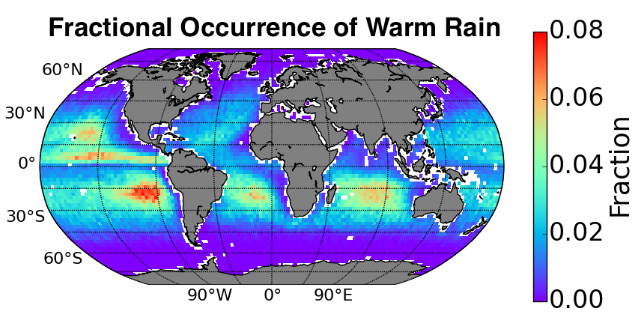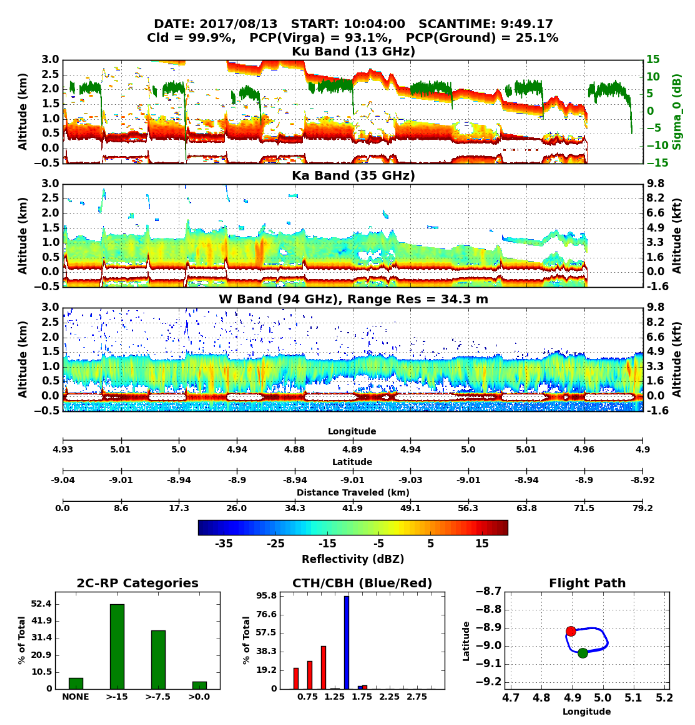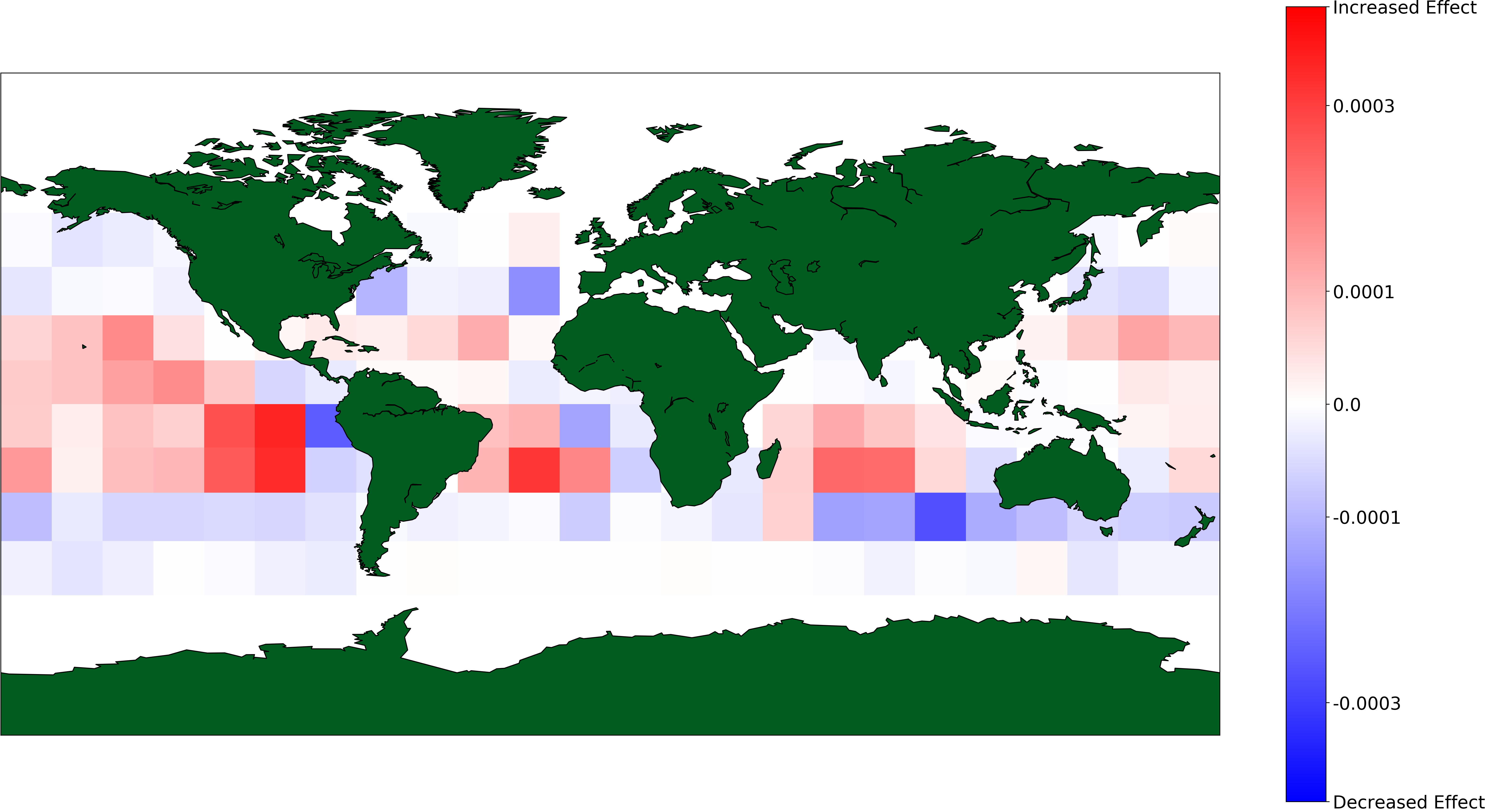Warm Rain
Warm Rain Introduction
The Global Distribution of Warm Rain
Warm Rain During the ORACLES Experiment
The ORACLES field campaign focuses on studying the semi-permanent stratocumulus deck over the southeast Atlantic Ocean. Observations from the 3rd Generation Airborne Precipitation Radar (APR-3), a triple frequency radar, is revealing everything from ultra-thin stratocumulus to moderately raining embedded shallow convection, within these clouds in a wide variety of meteorological regimes and during the biomass burning season. We are using these APR-3 measurements to evaluate long-standing scientific questions involving how, why, and what kind of aerosols suppress (or promote) warm rain.
Aerosol-Cloud-Precipitation Interactions
Albrecht (1989) hypothesized aerosol loading in a warm cloud layer will delay the onset of precipitation increasing the cloud extent and cloud lifetime. Satellite observations of the cloud lifetime effect, or the second indirect effect, have been sparse, but have suggested that models often fail to accurately represent the microphysical changes to the cloud extent and precipitation accurately.
CloudSat and CALIPSO high resolution observations allow us a glimpse into the effects of aerosol on both cloud and precipitation properties. The proposed pathway by Albrecht in 1989 claims precipitation suppression is the main pathway to an increase cloud extent, however it may be that the cloud lifetime effect is the summation of both an increased cloud extent due to delayed precipitation and cloud invigoration due to aerosol-cloud interactions. We are now distinguishing the difference between the two distinct pathways of increased cloud extent and quantifying the total cloud lifetime effect.




